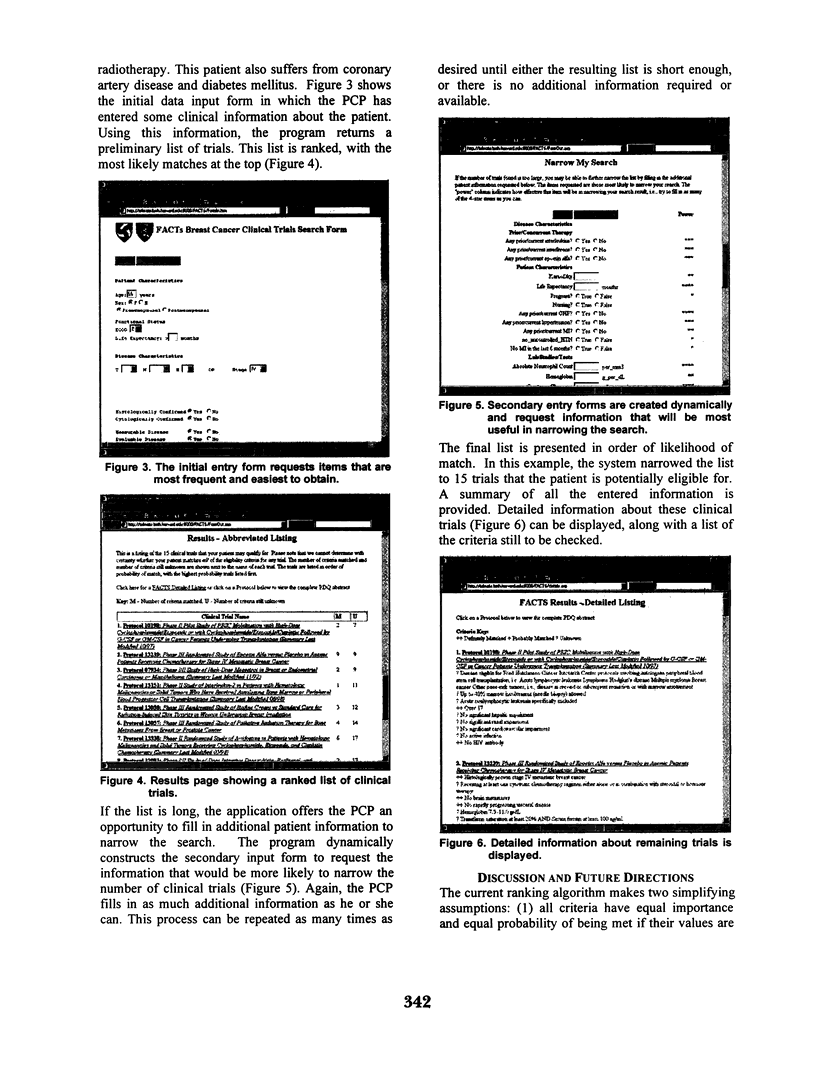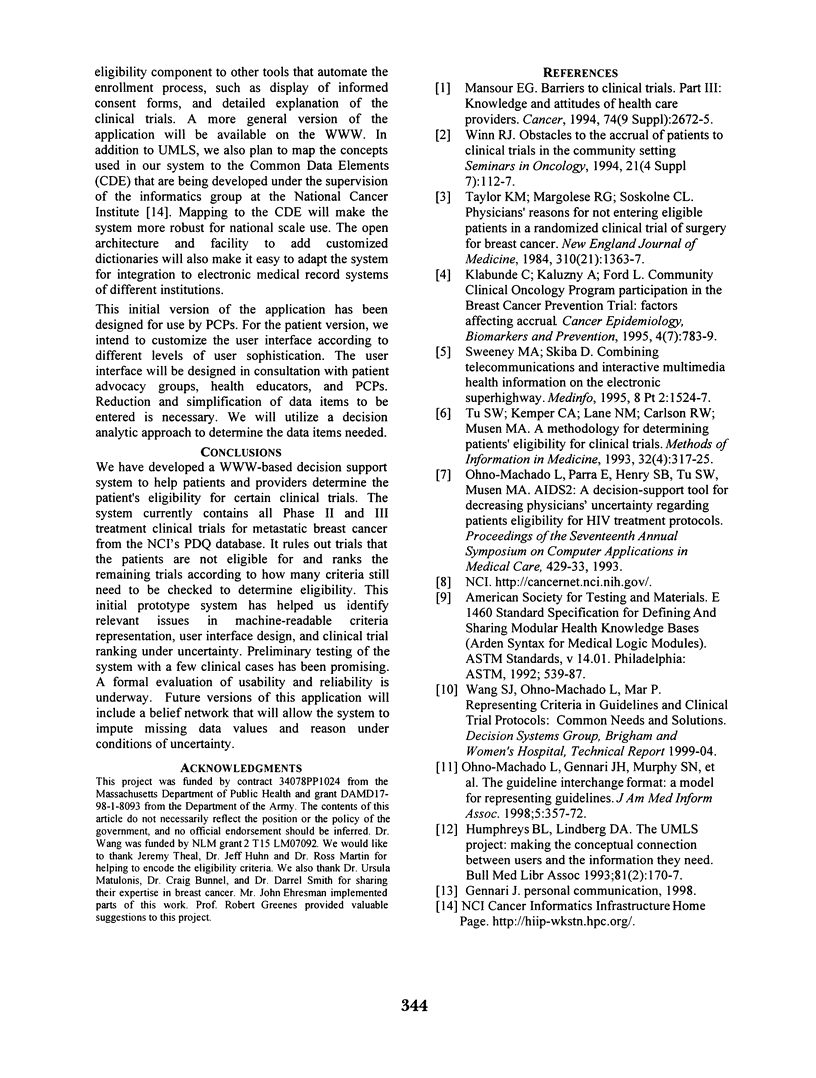Abstract
We have developed a system for clinical trial eligibility determination where patients or primary care providers can enter clinical information about a patient and obtain a ranked list of clinical trials for which the patient is likely to be eligible. We used clinical trial eligibility information from the National Cancer Institute's Physician Data Query (PDQ) database. We translated each free-text eligibility criterion into a machine executable statement using a derivation of the Arden Syntax. Clinical trial protocols were then structured as collections of these eligibility criteria using XML. The application compares the entered patient information against each of the eligibility criteria and returns a numerical score. Results are displayed in order of likelihood of match. We have tested our system using all phase II and III clinical trials for treatment of metastatic breast cancer found in the PDQ database. Preliminary results are encouraging.
Full text
PDF




Images in this article
Selected References
These references are in PubMed. This may not be the complete list of references from this article.
- Humphreys B. L., Lindberg D. A. The UMLS project: making the conceptual connection between users and the information they need. Bull Med Libr Assoc. 1993 Apr;81(2):170–177. [PMC free article] [PubMed] [Google Scholar]
- Klabunde C., Kaluzny A., Ford L. Community Clinical Oncology Program participation in the Breast Cancer Prevention Trial: factors affecting accrual. Cancer Epidemiol Biomarkers Prev. 1995 Oct-Nov;4(7):783–789. [PubMed] [Google Scholar]
- Mansour E. G. Barriers to clinical trials. Part III: Knowledge and attitudes of health care providers. Cancer. 1994 Nov 1;74(9 Suppl):2672–2675. doi: 10.1002/1097-0142(19941101)74:9+<2672::aid-cncr2820741815>3.0.co;2-x. [DOI] [PubMed] [Google Scholar]
- Ohno-Machado L., Gennari J. H., Murphy S. N., Jain N. L., Tu S. W., Oliver D. E., Pattison-Gordon E., Greenes R. A., Shortliffe E. H., Barnett G. O. The guideline interchange format: a model for representing guidelines. J Am Med Inform Assoc. 1998 Jul-Aug;5(4):357–372. doi: 10.1136/jamia.1998.0050357. [DOI] [PMC free article] [PubMed] [Google Scholar]
- Sweeney M. A., Skiba D. Combining telecommunications and interactive multimedia health information on the electronic superhighway. Medinfo. 1995;8(Pt 2):1524–1527. [PubMed] [Google Scholar]
- Taylor K. M., Margolese R. G., Soskolne C. L. Physicians' reasons for not entering eligible patients in a randomized clinical trial of surgery for breast cancer. N Engl J Med. 1984 May 24;310(21):1363–1367. doi: 10.1056/NEJM198405243102106. [DOI] [PubMed] [Google Scholar]
- Tu S. W., Kemper C. A., Lane N. M., Carlson R. W., Musen M. A. A methodology for determining patients' eligibility for clinical trials. Methods Inf Med. 1993 Aug;32(4):317–325. [PubMed] [Google Scholar]
- Winn R. J. Obstacles to the accrual of patients to clinical trials in the community setting. Semin Oncol. 1994 Aug;21(4 Suppl 7):112–117. [PubMed] [Google Scholar]






